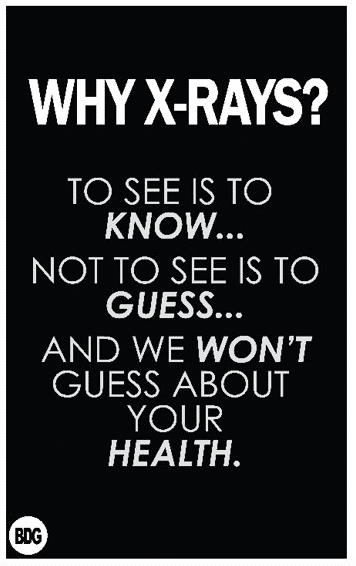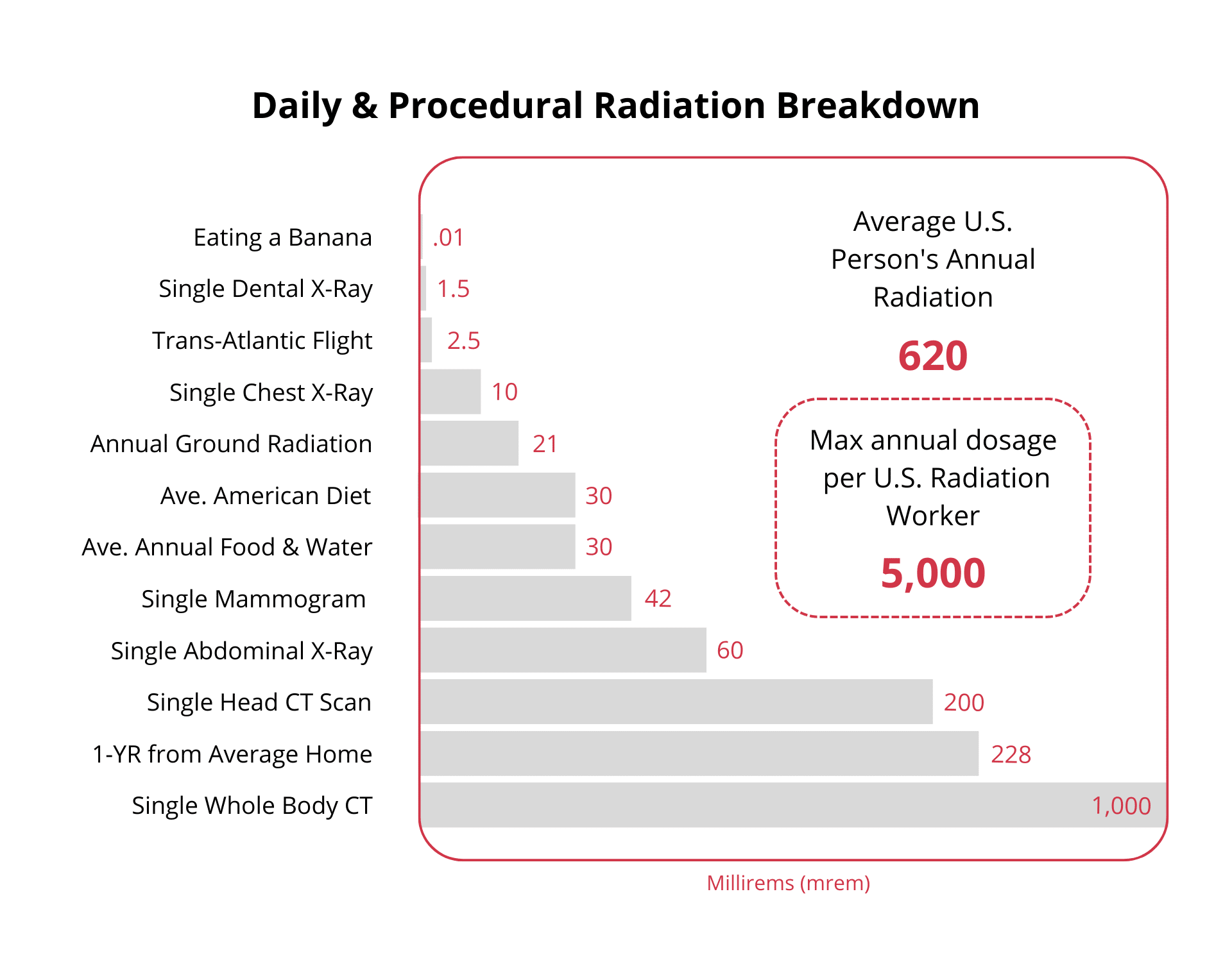Dental X-rays are a common tool dentists use to detect and diagnose dental problems. However, many people wonder, are dental X-rays safe? Let’s take a look at how dental x-rays work, what they’re used for, and whether or not they’re safe.
Are Dental X-Rays Safe?

In this blog post, we’ll take a look at the details of X-rays and X-ray machines, and hopefully resolve some of the concerns you may have about X-rays.
How X-Rays Work
First, what are X-rays? And how do dental X-ray machines work?
X-rays are, in many ways, similar to waves of light or radio waves. However, while the wavelengths of visible light allows us to perceive colors, our eyes can’t actually perceive X-rays, radio waves, or any other wavelengths. X-rays are electromagnetic waves, very similar to visible light, except their wavelengths are much tighter and they carry much more energy.
Different waves pass through different materials at different rates. For example, visible light will pass through glass, even though it’s solid, but it won’t pass through solid wood. Similarly, radio waves can reach our cell phones, computers and similar devices through the walls of our homes, but they struggle to go through pure metal walls. This has to do with how the waves interact with the electrons of the material.
How X-Ray Machines Work
What does this have to do with X-rays? X-rays pass through materials like clothing, skin, and muscle, but they’re stopped by the calcium in bones and teeth. This is what allows X-ray machines to show us our bones and teeth!
The X-ray machine creates a focused beam of X-ray waves which passes through the area being X-rayed onto an X-ray detector. The X-ray detector can then show images of our bones, teeth and other parts of our body. This can inform doctors how bones or teeth are arranged, whether or not they’re broken, how they’re broken, how they’re growing, and reveal signs of other masses or infections. All of this information enables better, faster, more accurate treatment for many different health concerns.
Advances in x-ray equipment these days allow your dentist to get high resolution x-ray images using much less radiation than was previously required.
All of our BDG locations are equipped with digital X-Ray sensors that provide clear, high-resolution, adjustable contrast results in seconds. The use of digital x-rays allows dentists to get very detailed and highly accurate scans at wider angles than older traditional x-ray machines with roughly 90% less radiation.
Dental X-Rays and Radiation
You may have concerns about X-rays because of their use of low levels of radiation. Radiation is sometimes associated with the harmful health effects of radioactive materials and industrial accidents. However, the term “radiation” actually refers to a very broad concept; energy moving from one place to another in the form of a wave or particle.
Light from lightbulbs and sunlight, microwaves, radio waves, and X-rays are all considered electromagnetic radiation. Electromagnetic radiation differs somewhat from other types of radiation, like those from particles, such as alpha particles, beta particles, and neutrons. Radiation is everywhere, and most of it is either harmless, or the damage is so small that our bodies naturally replace any injured cells in a short amount of time.
For a quick visual comparison, the chart below breaks out some average levels of radiation compared to dental and medical x-rays.

Like many things, radiation in large quantities can be harmful, but small quantities won’t really affect us. Consider sunlight and ultraviolet rays, which are a type of radiation; small quantities of ultraviolet radiation help our bodies produce vitamin D, which is essential for good health, but too much can cause sunburns and skin lesions. X-rays are similar; the small amounts used in individual x-ray images are too small to be harmful, but exposure to large amounts of x-rays over long periods of time can be harmful.
Why Do Dental Hygienists Leave the Room When They Take X-Rays?
You may have dental X-rays taken annually or bi-annually. Or, if you have an injury, you may have a few more X-rays taken at your doctor’s office or hospital. This small amount of X-ray exposure won’t hurt you, and poses very little risk to your overall health. However, your dental hygienist may be taking dozens of X-rays every day throughout each year. Without the proper precautions, this level of exposure could be harmful. That’s why your dental hygienist leaves the room before taking X-rays.
What Are Dental X-Rays Used For?
Dental X-rays are an important tool for detecting and diagnosing dental problems that may not be visible to the naked eye. Some common uses of dental X-rays include:
- Detecting cavities: X-rays can detect cavities that may not be visible during a visual examination.
- Examining tooth roots: X-rays can show the position of tooth roots and help diagnose conditions such as abscesses and impacted teeth.
- Planning for orthodontic treatment: X-rays can help your orthodontist evaluate the position of your teeth and jawbone and plan for orthodontic treatment.
- Diagnosing other dental conditions: X-rays can help diagnose conditions such as cysts, tumors, and bone loss.
Dental X-rays are considered safe all over the world, and they’re an important tool for detecting dental problems. If you have concerns about dental X-rays, talk about them with your dentist. Ask ahead of time what X-Ray technology is used at the practice you’d like to visit and talk to them about their procedures for safeguarding patients.
If you live in the Las Vegas area and you’re interested in dental X-rays, our BDG dental offices are all updated with the latest digital sensor X-ray technology and our high procedural standards cover taking x-rays as well as every aspect of your dental care experience. Make an appointment today >
